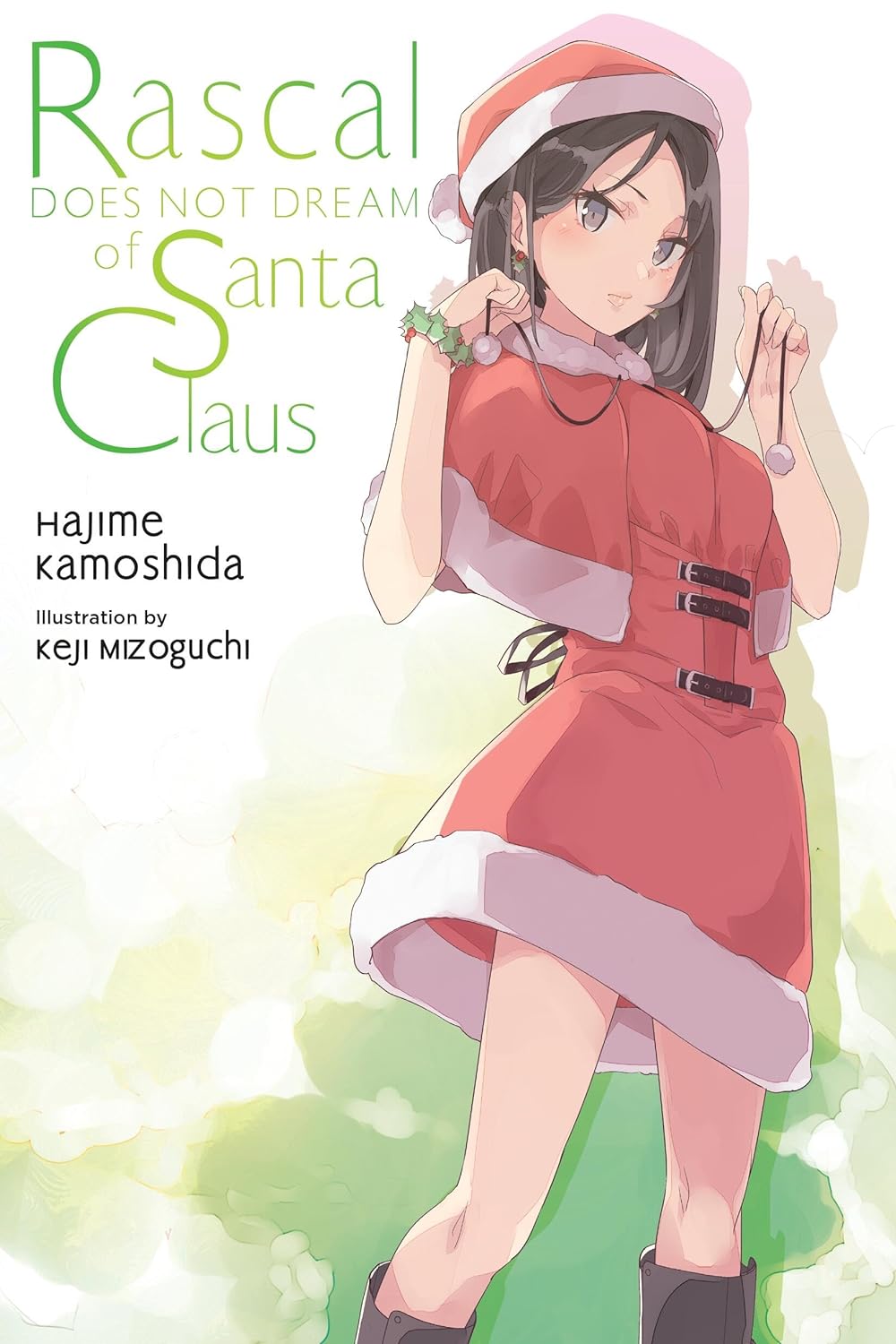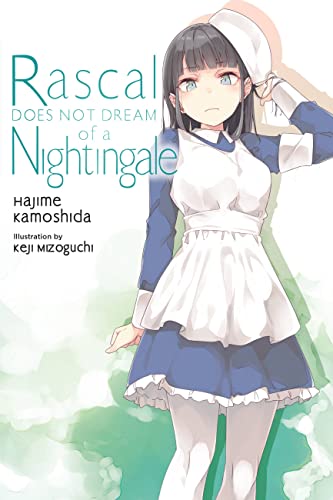By Hajime Kamoshida and Keji Mizoguchi. Released in Japan as “Seishun Buta Yarou wa Santa Claus no Yume wo Minai” by Dengeki Bunko. Released in North America by Yen On. Translated by Andrew Cunningham.
You know, Rascal Does Not Dream turned into a horror series so gradually, I didn’t even notice. Oh sure, each volume has had its share of horror and suspense – far more than you’d normally expect from a high school romcom. Starting with Mai potentially disappearing and Sakuta’s horrible scars, each volume has sometimes looked deep into the abyss. But I don’t think we’ve had a volume lean quite so hard into actual horror than this one. Even Vol. 6 and 7 was meant to be a tragedy, not horror. Here we get the ongoing Touko plot blending into loss of identity, and over the course of the book we realize that it’s not just Nene who’s dealing with the loss of identity, but A LOT of other people. And now they’re all invisible Santas. And they’re trying to kill Mai. As I said. Creepy as hell. Sakuta manages to resolve the immediate issue this time around, but only by getting physically injured to protect his love. Also, the ending is not reassuring.
Sakuta has a Christmas dream that Mai is singing at a concert, then announced publicly that she is Touko Kirishima. What’s worse, a whole lot of other people had similar dreams. Other, more disturbing dreams are also happening. Kaede dreamed she had reverted to her alternate self again. Futaba dreamed that she and Kunumi were on a happy date together, which is ominous given that he’s still together with Kamisato. And Mai… didn’t have a dream at all. It all has to relate to the Santa-wearing Touko, and Sakuta spends most of the book looking into Touko, as well as the girl he thinks she is, Nene. The answer to how to solve her problem is a lot closer to Sakuta than he thinks, but… is that really the actual problem? Is he just treating a symptom? And what’s with the dream of Mai getting injured and falling into a coma?
As I said, there’s a lot of scary stuff here. Particularly the ending, showing Mai surrounded by about 100 Santa-clad Toukos that no one else seems to be able to see. I did enjoy the wrapup on Nene’s plot specifically, but it also made me wonder how she and all the other Toukos are meant to reintegrate into society after having “vanished” for about 10 months. The book, unsurprisingly, decides to elide over that. I also enjoyed seeing the friendship/codependent helper relationship that he and Ikumi have, is only because it’s just nice to see him have someone reliable to talk to who can help deal with everything even when no one else can. And, honestly, that may end up tying into the next book. Because anyone who thinks the next book is not going to start with Mai saying that she’s Touko is fooling themselves. The whole volume is a setup for that.
There are two books to go, and they come out only two months apart (the final one is in October in Japan), so Yen may wait and try to release them the same way here. The identity of the antagonist is not hard to guess (hint: what major girl hasn’t got a cover yet?) but I have no idea how it’s going to resolve. In the meantime, there is fun banter here, I promise, but it’s getting thin on the ground.



